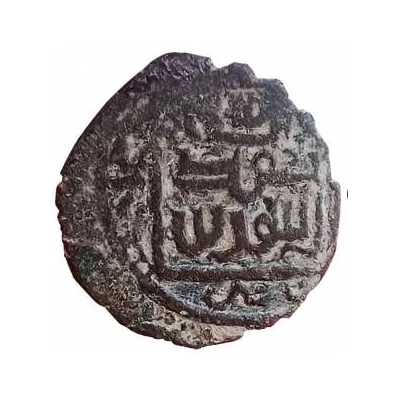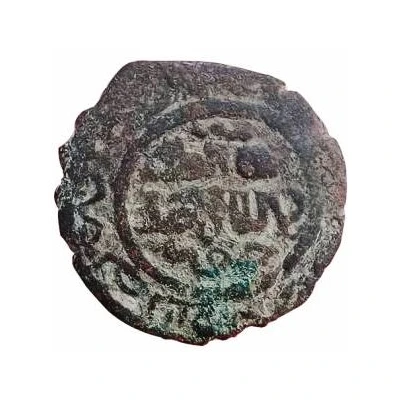


Obverse © Geison Pulga (CC BY-NC-SA)
Fals - "Ilkhan" Abu Sa'id
726 (1316-1335) years| Copper | 1.43 g | 19 mm |
| Issuer | Ilkhanate |
|---|---|
| Khan | Abu Sa'id Bahadur (1316-1335) |
| Type | Standard circulation coin |
| Year | 726 (1316-1335) |
| Calendar | Islamic (Hijri) |
| Value | 1 Fals (1⁄60) |
| Currency | Dinar (1256-1388) |
| Composition | Copper |
| Weight | 1.43 g |
| Diameter | 19 mm |
| Shape | Round (irregular) |
| Technique | Hammered |
| Orientation | Variable alignment ↺ |
| Demonetized | Yes |
| Updated | 2024-10-06 |
| Numista | N#412954 |
|---|---|
| Rarity index | 97% |
One interesting fact about the "Ilkhan" Abu Sa'id 726 (1316-1335) coin from Ilkhanate is that it features a unique blend of Islamic and Mongolian influences in its design. The coin's obverse side features a stylized representation of the Mongolian emblem, the "soyombo," which is a symbol of the Mongolian nation and consists of a pair of golden wings, a crown, and a lance. The reverse side of the coin features a stylized representation of the Islamic crescent moon and star, which is a common motif in Islamic art and architecture. This blending of cultural influences reflects the diverse cultural heritage of the Ilkhanate Empire, which was founded by the Mongols in the 13th century and covered a vast territory that included present-day Iran, Azerbaijan, and parts of Turkey.



